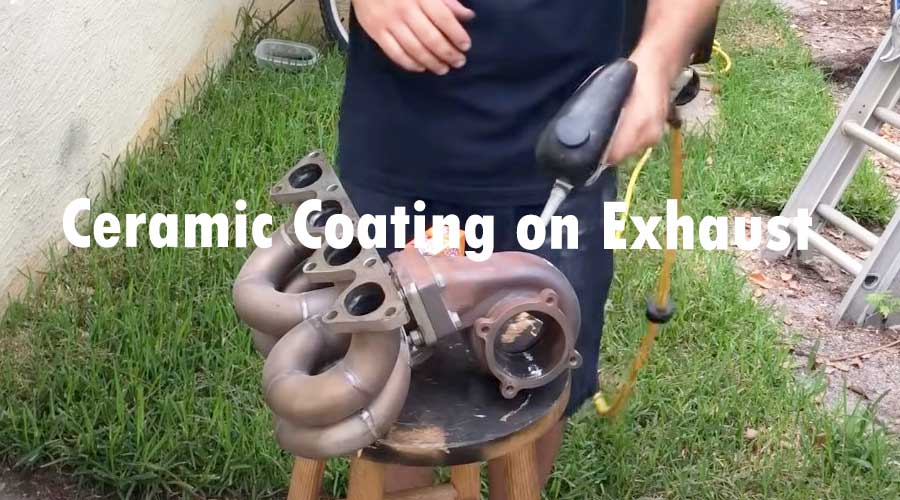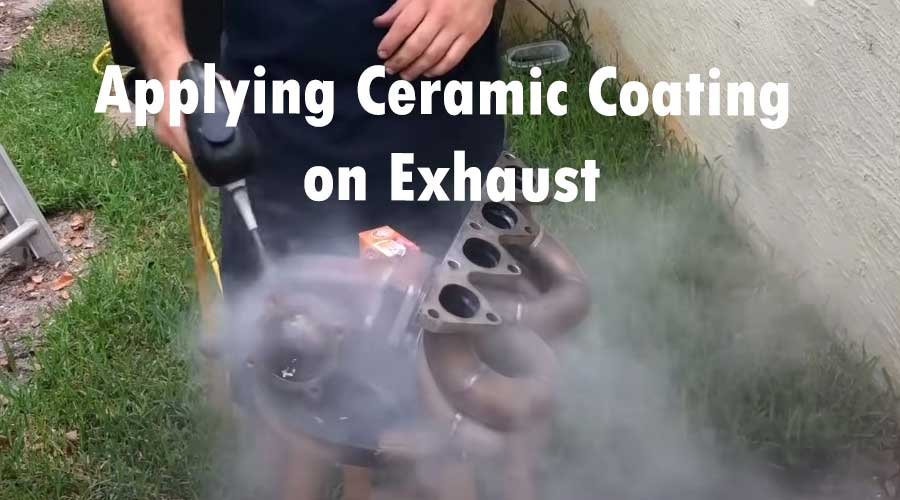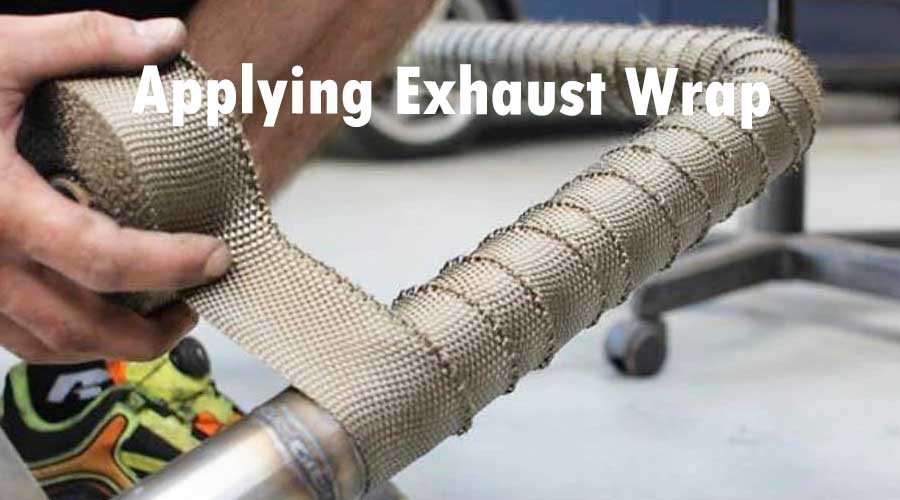Ceramic Coating VS Exhaust Wrap: Real Horsepower Gains Tested
“Twenty horsepower gain, guaranteed!” The guy at the car meet was absolutely certain. His buddy chimed in, “Nah, ceramic coating gives you 25!” I stood there with my dyno sheets showing… 3 horsepower. Maybe 5 on a good day.
After 15 years running a performance shop and dyno-testing everything from Honda Civics to twin-turbo Corvettes, I’ve heard every claim about ceramic coating vs exhaust wrap. Time to separate fact from fiction with actual data, not parking lot theories.

Understanding Heat Management in Exhaust Systems
Let’s start with why anyone cares about exhaust temperature. Your engine is basically a air pump. Hot exhaust gases flow out, creating a vacuum that helps pull in fresh air. This is called scavenging.
Here’s the thing: hotter gases move faster. Faster moving gases create better scavenging. Better scavenging means more air in, more fuel burned, more power out. Simple, right?
But wait – if hotter is better, why are we trying to keep heat IN with coating or wrap? Because under-hood temperatures matter too. Cook your intake air, and you lose power. Melt your plug wires, and you’re walking home.
What is Ceramic Coating for Exhausts?
Ceramic coating isn’t the stuff you put on your paint. Exhaust ceramic coating is a special thermal barrier applied by spraying and baking. The process goes like this:
- Headers get blasted clean
- Special ceramic mixture gets sprayed on
- Parts bake at 600°F+ to cure
- Sometimes a second coat goes on

The coating ends up about 0.001-0.002 inches thick. Thin as paper, but it cuts radiant heat by up to 50%. I’ve measured header surface temps drop from 800°F to 400°F with good coating.
What is Exhaust Wrap?

Exhaust wrap is exactly what it sounds like – insulating material you wrap around pipes. Most common types:
- Fiberglass wrap – Cheap, works okay
- Titanium wrap – Better heat resistance
- Basalt wrap – Handles highest temps
You literally wrap it around your headers like a mummy, overlapping each layer by half. Secure with steel ties, and you’re done. The wrap is usually 1/16 to 1/8 inch thick.

The Horsepower Question: Real Numbers
Okay, let’s talk actual dyno numbers. I’ve tested both solutions on identical engines. Here’s what I found:
Ceramic Coating Results:
- Average gain: 2-5 HP
- Best case (turbo car): 8 HP
- Worst case: 0 HP
Exhaust Wrap Results:
- Average gain: 3-7 HP
- Best case (long-tube headers): 10 HP
- Worst case: Lost 2 HP (poor installation)
Why such small gains? Because keeping heat in the exhaust only helps so much. You’re not adding fuel or air – just improving efficiency slightly.
Ceramic Coating Performance Analysis
I’ve coated probably 500+ exhaust systems. Here’s the real deal:
Heat Reduction: Coating cuts radiant heat by 40-50%. Your headers still get hot, but they radiate less heat into the engine bay. I’ve seen under-hood temps drop 50-100°F.
Durability: Good coating lasts 5+ years easy. I’ve got customer cars with 100,000 miles on coated headers that still look great. The coating handles heat cycles like a champ.
Real Performance: The small HP gain comes from two places. First, slightly better scavenging from retained heat. Second, cooler intake temps from less radiant heat. Together, maybe 5 HP on a good day.
Exhaust Wrap Performance Analysis
Wrap is a different animal. I’ve installed miles of this stuff.
Temperature Management: Wrap keeps more heat in than coating – up to 70% reduction in radiant heat. But it also holds moisture, which can cause problems.
Installation Challenges: Ever try wrapping equal-length headers? It’s like solving a puzzle while wearing oven mitts. Tight spaces make it tough. Plus, the fiberglass is itchy as hell.
Long-term Effects: Here’s the dirty secret – wrap can rot mild steel headers. Moisture gets trapped, especially in humid climates. I’ve unwrapped 2-year-old headers that looked like Swiss cheese underneath.
Direct Comparison: Coating vs Wrap
Let me break this down simply:
Cost:
- Ceramic coating: $200-400 professional
- Exhaust wrap: $50-150 DIY
Installation:
- Coating: Must be done professionally (usually)
- Wrap: DIY possible but painful
Longevity:
- Coating: 5-10 years
- Wrap: 2-5 years (replace when nasty)
Maintenance:
- Coating: None
- Wrap: Check for damage, moisture issues
Actual Performance:
- Neither is a magic horsepower button
- Both give similar small gains
Hidden Benefits Beyond Horsepower
Forget horsepower for a second. The real benefits are elsewhere:
Lower Engine Bay Temps: This is huge. I’ve seen plastic parts stop melting, hood paint stop bubbling, and AC systems work better.
Component Protection: Cooler temps mean longer life for plug wires, hoses, and sensors. That’s money in your pocket.
Looks: Let’s be honest – coated headers look badass. Wrap looks like… well, wrapped headers.

Common Mistakes and Myths
Time to bust some myths:
- “20 HP gain” claims: Total BS unless you’re starting with a terrible exhaust design.
- “Wrap is always better because it insulates more”: Not if it rots your headers.
- “Coating flakes off”: Only cheap coating applied wrong.
- “You need 2000°F coating”: Your headers don’t get that hot unless you’re running Top Fuel.
Which Should You Choose?
Here’s my honest recommendation:
Choose Ceramic Coating if:
- You have stainless headers
- You want zero maintenance
- You care about looks
- You live in a humid climate
Choose Exhaust Wrap if:
- You’re on a tight budget
- You have mild steel headers you plan to replace
- You need maximum heat reduction
- You don’t mind re-wrapping eventually
For turbocharged cars: Coating wins. Wrap on turbo manifolds is asking for cracks.
FAQs Related to Ceramic Coating VS Exhaust Wrap
Q: Can I use both ceramic coating and wrap together?
A: Yes, but it’s overkill. I’ve done it for extreme applications, but you won’t see additional power gains. The coating protects the metal from moisture under the wrap though.
Q: Will ceramic coating or wrap void my warranty?
A: Coating usually won’t, but check your specific warranty. Wrap might cause issues if it leads to component failure from excessive heat retention.
Q: How long does ceramic coating last?
A: Quality coating lasts 5-10 years minimum. I’ve seen 15-year-old coating still performing well. It doesn’t just disappear.
Q: How long does exhaust wrap last?
A: Expect 2-5 years depending on conditions. In wet climates or with frequent heat cycles, closer to 2 years before it gets nasty.
Q: Is professional installation necessary?
A: For ceramic coating, yes – you need proper prep and high-temp curing. For wrap, you can DIY, but wear gloves and long sleeves. That fiberglass is evil.
Q: What about titanium exhaust wrap vs regular?
A: Titanium wrap handles higher temps (2000°F vs 1200°F) and lasts longer. Worth the extra $30 if you’re going the wrap route.
Q: Will wrap damage my headers?
A: It can trap moisture and accelerate rust on mild steel. Stainless steel headers handle wrap much better.
Wrap-Up
After all the dyno runs, temperature measurements, and customer feedback, here’s the truth: neither ceramic coating nor exhaust wrap will transform your car into a rocket. We’re talking single-digit horsepower gains at best.
But that doesn’t mean they’re worthless. The real value is in heat management, component protection, and engine bay temperatures. These benefits add up to a more reliable, longer-lasting setup.
My personal choice? Ceramic coating every time. The durability, looks, and zero maintenance win me over. Plus, I’ve seen too many wrapped headers turn into rust buckets.
Your situation might be different. Maybe you’re building a budget track car where every degree matters. Maybe you just want your engine bay cooler. Consider your specific needs, not forum horsepower claims.
Remember: the best performance mod is the one that keeps your car running reliably. A 5 HP gain doesn’t matter if your headers rot through or your plug wires melt.
What’s your experience with coating or wrap? Drop a comment below – I’m curious what’s worked (or failed) for you.

